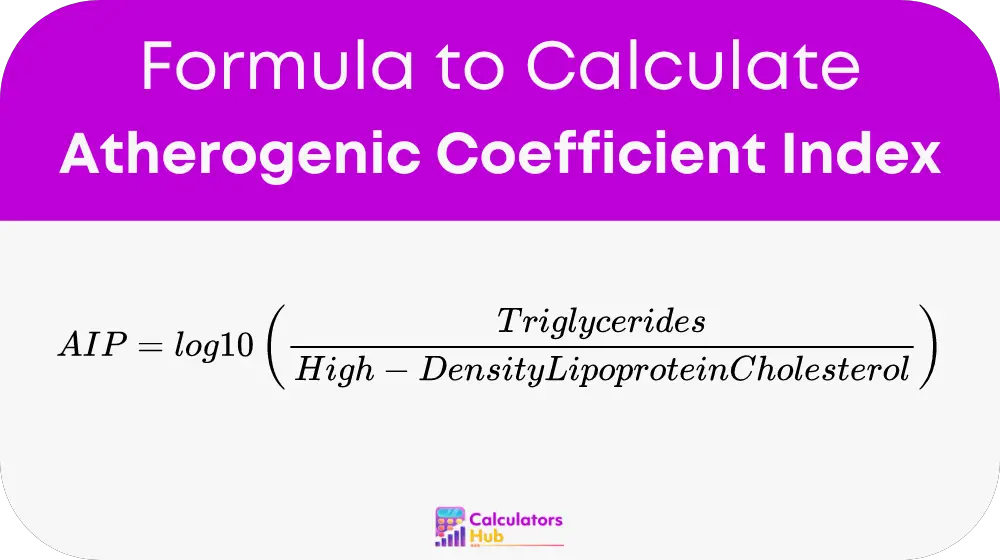The Atherogenic Coefficient Calculator is an advanced analytical tool designed to help healthcare providers assess the risk of atherosclerosis and cardiovascular disease in patients. It computes the Atherogenic Index of Plasma (AIP), which is a reliable indicator of the balance between harmful triglycerides and protective high-density lipoprotein (HDL) cholesterol in the blood.
Formula of Atherogenic Coefficient Index Calculator
The formula to calculate the Atherogenic Coefficient, also known as the Atherogenic Index of Plasma (AIP), is:

Where:
- Triglycerides: The concentration of triglycerides in the blood, typically measured in mmol/L.
- High-Density Lipoprotein Cholesterol (HDL-C): The concentration of high-density lipoprotein cholesterol in the blood, also typically measured in mmol/L.
This logarithmic formula helps in quantifying the risk level, with higher values indicating a greater risk of developing cardiovascular diseases.
Table for General Terms
| Term | Definition |
|---|---|
| Triglycerides | A type of fat (lipid) found in your blood. When you eat, your body converts any calories it doesn't need right away into triglycerides. |
| HDL Cholesterol | Often referred to as "good" cholesterol because it helps remove other forms of cholesterol from your bloodstream. |
| Cardiovascular Risk | The likelihood of experiencing heart-related problems, such as heart attack or stroke, based on various health indicators. |
| Atherosclerosis | A condition where arteries become clogged by fatty substances, such as cholesterol and triglycerides, leading to reduced blood flow. |
| Logarithmic Function | A mathematical function that determines the log base 10 of a number, used in various scientific calculations. |
This table is designed to aid users in understanding key terms associated with the Atherogenic Coefficient Calculator and cardiovascular health.
Example of Atherogenic Coefficient Index Calculator
Consider a patient with the following lipid profile:
- Triglycerides: 2.5 mmol/L
- HDL Cholesterol: 1.0 mmol/L
Calculate the Atherogenic Index of Plasma:
AIP = log10(2.5 / 1.0) = log10(2.5) = 0.397
This value suggests a moderate risk of atherosclerosis, indicating the need for potential lifestyle changes or medical interventions.
Most Common FAQs
A high AIP value suggests an increased risk of developing atherosclerosis and other cardiovascular diseases, necessitating closer monitoring and potentially aggressive treatment strategies.
Yes, lifestyle changes such as a healthier diet, regular exercise, and smoking cessation can significantly improve the AIP value by lowering triglycerides and increasing HDL cholesterol.
Healthcare providers might recommend calculating the AIP during regular health check-ups or more frequently if the patient is at high risk for cardiovascular diseases.